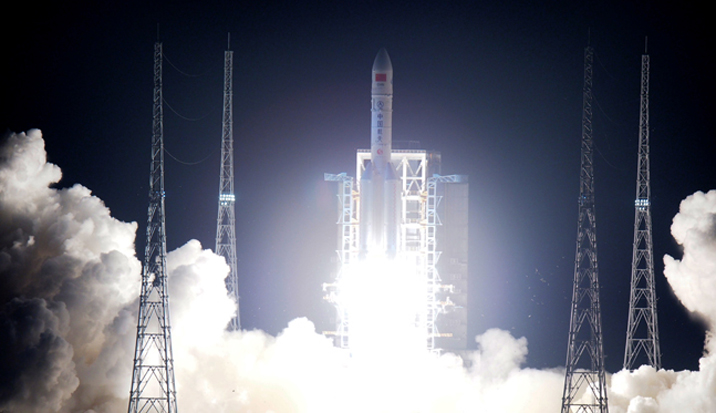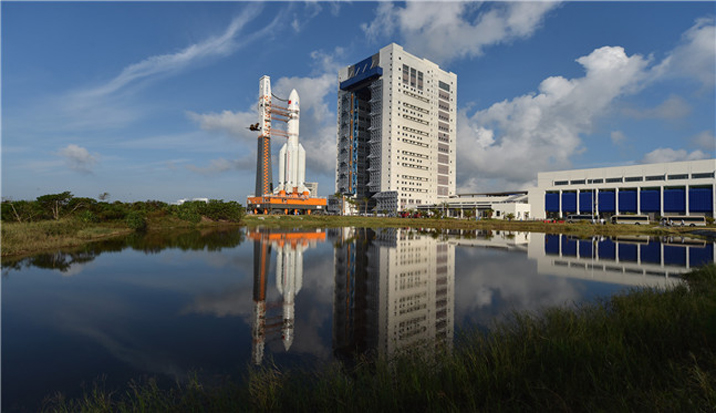
China's powerful new heavy-lift rocket soared on its maiden flight today (Nov. 3), bringing the nation one step closer to building its own space station in Earth orbit.
The Long March 5 rocket lifted off from the Wenchang launch center on Hainan Island, off China's southern coast, at 8:43 a.m. EDT (1000 GMT; 8:43 p.m. Beijing time), according to Chinese media reports.
Though Chinese space officials have not revealed many details about the Long March 5's maiden mission, the launcher apparently carried to orbit an experimental satellite called Shijian-17, which is designed to test electric-propulsion technology. [China's Space Station Plan in Pictures]
But the main goal of today's flight was to test the rocket, which consists of two stages and stands 187 feet (57 meters) tall. The Long March 5 is capable of lofting 27.6 tons (25 metric tons) to low-Earth orbit (LEO) and 15.4 tons (14 metric tons) to the more distant geostationary transfer orbit, according to the China Aerospace Science and Technology Corp.
The rocket is therefore nearly as powerful as United Launch Alliance's Delta IV Heavy launcher, the brawniest rocket operating today. (But some heftier rockets are coming online soon. For example, SpaceX's Falcon Heavy, which is expected to fly for the first time early next year, will be capable of sending 60 tons to LEO, company representatives have said.)
The Long March 5 is a crucial piece of China's ambitious space plans. For instance, the rocket will launch the big modules that make up China's 60-ton space station, which the nation hopes to have up and running by 2022.

Get the Space.com Newsletter
Breaking space news, the latest updates on rocket launches, skywatching events and more!
The Long March 5 will also loft Chang'e-5, a robotic sample-return mission to the moon. Chang'e-5 is currently scheduled to lift off sometime next year, Chinese space officials have said.
The new rocket is part of the venerable Long March family, which has been launching spacecraft for more than four decades. Two other members of this family made their debuts recently as well: The Long March 6 and Long March 7 vehicles flew for the first time in September 2015 and June 2016, respectively.
Long March rockets have historically used toxic fuel such asdinitrogen tetroxide, but the three new vehicles are powered by a more environmentally friendly kerosene/liquid oxygen combo.
Follow Mike Wall on Twitter @michaeldwall and Google+. Follow us @Spacedotcom, Facebook or Google+. Originally published on Space.com.
Join our Space Forums to keep talking space on the latest missions, night sky and more! And if you have a news tip, correction or comment, let us know at: community@space.com.

Michael Wall is a Senior Space Writer with Space.com and joined the team in 2010. He primarily covers exoplanets, spaceflight and military space, but has been known to dabble in the space art beat. His book about the search for alien life, "Out There," was published on Nov. 13, 2018. Before becoming a science writer, Michael worked as a herpetologist and wildlife biologist. He has a Ph.D. in evolutionary biology from the University of Sydney, Australia, a bachelor's degree from the University of Arizona, and a graduate certificate in science writing from the University of California, Santa Cruz. To find out what his latest project is, you can follow Michael on Twitter.









